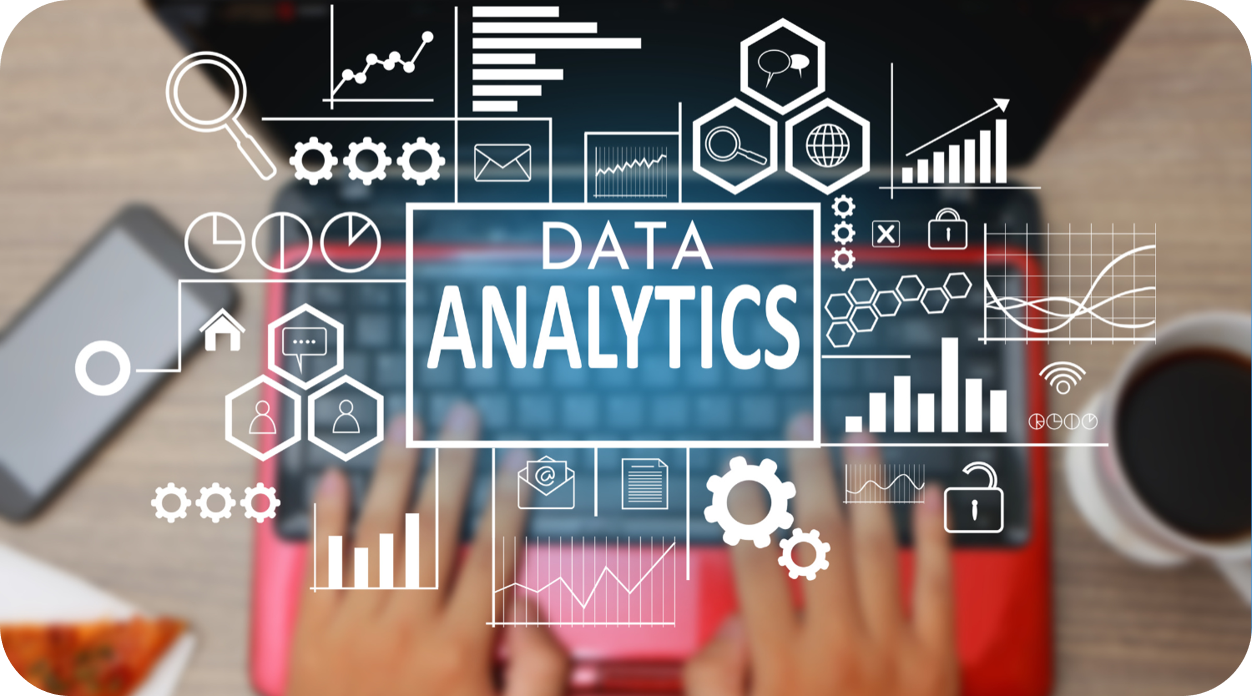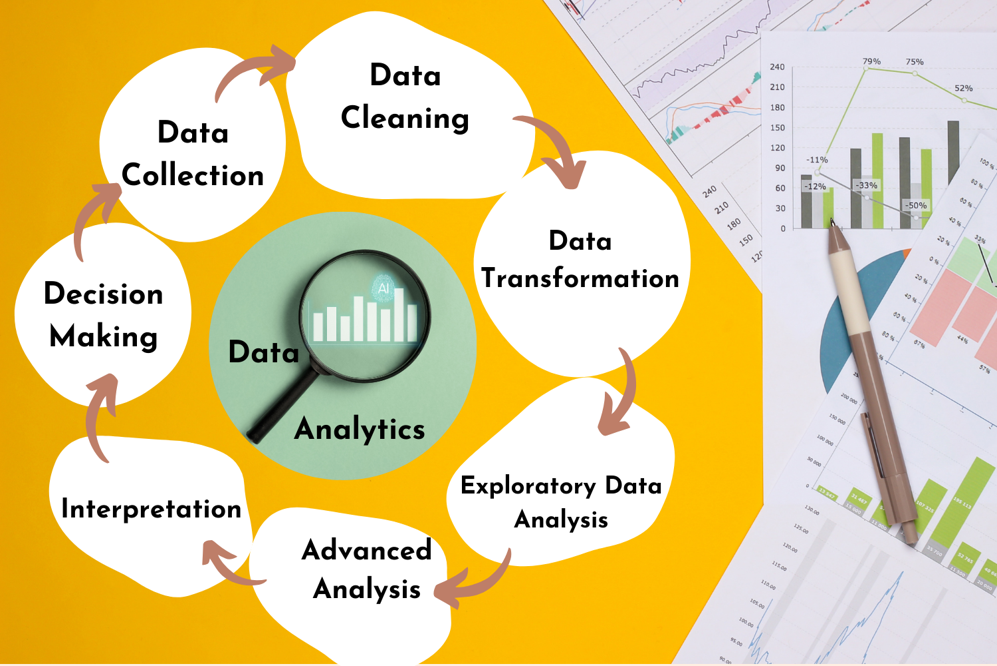
DATA ANALYTICS
Data analytics is the process of collecting, cleaning, transforming and analyzing data in order to draw insights, make predictions, and drive informed decision making. The key steps in data analytics include:
Data Collection
Data Cleaning
Data Transformation
Exploratory Data Analysis
Advanced Analysis:
Interpretation
Decision Making
Data Collection: Gathering relevant data from various sources including databases, web, sensors, etc. Structured, semi-structured and unstructured data can all be collected.
Data Cleaning: Detecting and correcting corrupt, inaccurate or irrelevant parts of the data. This involves tasks like handling missing values, smoothing noise, identifying outliers etc.
Data Transformation: Converting the raw data into a format suitable for analysis. This may involve data transformations like aggregation, normalization, discretization etc.

Exploratory Data Analysis: Applying statistics and visualizations to explore the data, find patterns, and highlight important relationships. This provides a high-level perspective on the data characteristics.
Advanced Analysis: Applying sophisticated quantitative methods to derive actionable insights, make predictions, test hypothesis and build models. Methods like regression, machine learning, neural networks etc are used.
Interpretation: Interpreting the data analysis results in the right context and drawing relevant conclusions. Effective communication of insights using visualization is key.
Decision Making: Using the data-driven insights to guide strategic decisions and improve business processes. The insights help identify opportunities, trends and guide actions.

So in summary, data analytics helps make sense of data to guide strategy and operations. It relies on statistical and machine learning techniques to derive insights from data. The goal is fact-based decision making.

